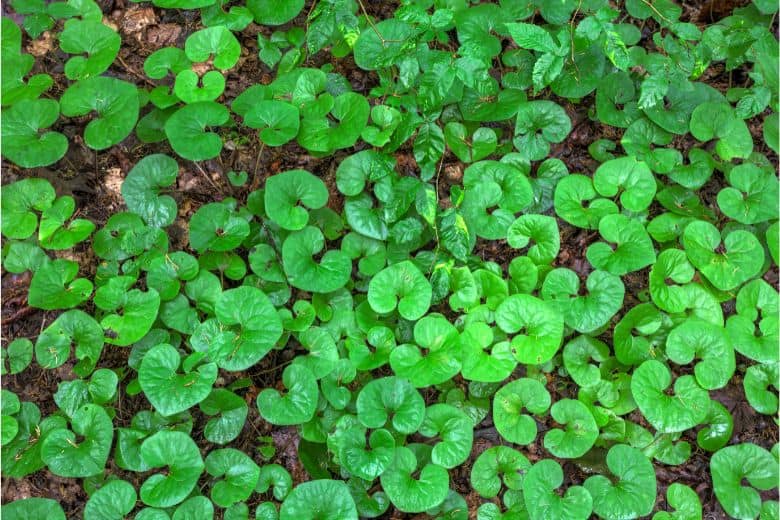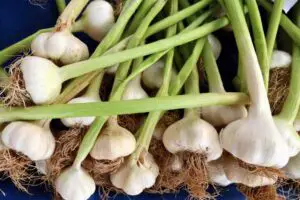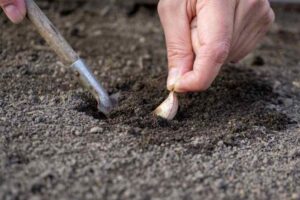
Why wild ginger, you ask? Wild ginger possesses an allure due to its distinct, spicy flavor, differentiating it from the common ginger. Used for centuries by native cultures for its medicinal properties, it has certainly earned its place in our hearts and our gardens.
Each year, thousands of enthusiasts seek to understand the proper methods to extract the alluring scent and potent flavor of wild ginger.
Wild Ginger, not to be confused with its commercially cultivated cousin, is a hardy plant native to the woodlands of North America. Ever wondered how to harvest this valuable plant from the wild? Well, strap in because we’re about to embark on a delightful journey of discovery and learning.
What is Wild Ginger?
Wild ginger, scientifically known as Asarum canadense, is a perennial plant native to the rich, shaded soils of North American forests. Not to be mistaken with commercial ginger (Zingiber officinale), wild ginger bears a resemblance in taste and scent, which gives it its common name.
Its heart-shaped leaves and reddish-brown flowers, blooming close to the ground, give it a distinct appearance. Remember, knowledge is power when it comes to identifying plants.
When Does Wild Ginger Grow?
The question of when wild ginger grows is equally crucial. It sprouts in early spring, usually in the shaded undergrowth of deciduous forests. Its growth peaks in summer, making it the perfect time for harvesting.
Recognizing Wild Ginger
Surely you’re eager to start, but before you do, make sure you’re picking the right plant! How? Look for the heart-shaped leaves, often in pairs, and the distinctive reddish-brown flowers. Plus, the strong, spicy aroma is a dead giveaway!
- Recognizing the Plant: Wild ginger is known for its heart-shaped leaves, low-growing habit, and small, bell-shaped flowers that typically hide under the foliage. The root, or rhizome, is where the potent ‘ginger’ flavor resides and has a spicy, fragrant aroma.
- Geographic Distribution: Wild ginger is native to deciduous forests across eastern and central North America, from Quebec to Manitoba in Canada, and south to Louisiana and Tennessee in the United States.
When to Harvest Wild Ginger
- Optimum Harvesting Time: The best time to harvest wild ginger is in late summer to early fall. This is when the rhizomes are most potent, although they can be harvested any time the ground isn’t frozen.
- Seasonal Changes and Wild Ginger: Observing seasonal changes can give you clues about when to harvest wild ginger. When the plant’s leaves start to turn yellow or fall, it’s a good sign that the rhizomes are ready for harvest.
Sustainable Harvesting Practices
1. The Importance of Sustainability
Harvesting wild ginger should always follow sustainable practices. Wild plants are an integral part of our ecosystem and should be harvested responsibly to avoid disturbing their natural habitats.
2. How to Harvest Wild Ginger Sustainably
When harvesting wild ginger, it is essential to take only what you need. Avoid harvesting the entire plant and instead, pick the rhizomes judiciously, leaving plenty for the plant to recover and thrive.
How to Harvest Wild Ginger ( Step-by-Step Guide)
Essential Tools for Harvesting
Before we begin our ginger quest, make sure you’re properly equipped. A sturdy garden trowel or a hori-hori knife, gloves, and a basket or bag to hold your bounty will be essential.
Step 1: Identification
Before harvesting, make sure you can positively identify wild ginger. It is a low-growing plant, typically no more than a foot in height, with heart-shaped leaves and a brownish-red flower that grows close to the ground. The roots should have a strong, spicy, ginger-like scent when broken.
Step 2: Find the Right Time to Harvest
The best time to harvest wild ginger is in late summer or early fall, once the plant has had a chance to mature and store energy in its rhizomes.
Step 3: Choose a Suitable Location
Select a location where the wild ginger is abundant. It’s important not to over-harvest in any one area to prevent the local population from being depleted. A good rule of thumb is to only harvest 1 in every 20 plants you find.
Step 4: Digging Up the Rhizomes
Use a small hand shovel or a similar tool to gently dig up the rhizomes (underground stems). Be careful not to damage the rhizomes as you dig.
Step 5: Harvest the Rhizomes
Once you have exposed the rhizomes, cut off a portion of them, leaving at least two thirds in the ground. This allows the plant to continue growing.
Step 6: Replanting
Cover the remaining rhizomes with soil and lightly pat down the area to encourage the plant to regrow.
Step 7: Cleaning the Rhizomes
Once you have harvested your rhizomes, rinse them well under running water to remove soil and other debris.
Step 8: Drying or Storing
You can either dry the rhizomes or store them fresh. To dry them, cut them into thin slices and place them in a well-ventilated, shaded area until they are completely dry. For fresh storage, wrap them in damp paper towels and store them in the refrigerator.
Step 9: Use Responsibly
Remember that wild ginger is a potent herb. Use it responsibly and sparingly in your culinary or medicinal preparations.
Note: While the plant is named ‘wild ginger’, it is not the same as the common ginger found in grocery stores (Zingiber officinale). It has different properties and flavor profile. Always consult with a healthcare professional before consuming wild plants or using them for medicinal purposes, and make sure to respect local laws and regulations regarding foraging.
Common Mistakes to Avoid When Harvesting Wild Ginger
Harvesting wild ginger might seem straightforward, but there are pitfalls to avoid. Overharvesting and not correctly identifying the plant are among the common mistakes.
Cleaning and Storing Wild Ginger (Post-Harvesting Procedures)
- Cleaning Process: Once harvested, wild ginger rhizomes should be cleaned thoroughly. Rinse them under cold water, scrubbing lightly to remove any dirt or debris.
- Best Practices for Storage: Wild ginger can be stored in a cool, dry place. To extend its shelf life, you can also dry the rhizomes or freeze them.
Using Wild Ginger
1. Culinary Uses
Wild ginger has a strong, spicy flavor that adds a unique touch to dishes. It can be used fresh or dried in teas, soups, and stir-fries.
2. Medicinal Uses
As a home remedy, wild ginger can be used as a digestive aid. Brew it as a tea or tincture to alleviate stomach discomfort.
3. Brewing Wild Ginger Tea
Brewing wild ginger tea is as simple as simmering cleaned, sliced rhizomes in hot water. Add a touch of honey to balance the spice if you prefer.
Frequently Asked Questions
Can I use wild ginger the same way as regular ginger?
Answer: While wild ginger does have a similar spicy flavor, it should be used sparingly compared to regular ginger due to its stronger taste.
What does wild ginger taste like?
Answer: Wild ginger has a spicy, peppery taste similar to culinary ginger, though with a distinct woodland flavor.
Is wild ginger safe to eat?
Answer: While traditionally used as a food source, some health organizations caution against consuming wild ginger due to the presence of potentially harmful compounds. Always consult with a professional forager or botanist if unsure.
Can wild ginger be grown at home?
Answer: Yes, wild ginger can be grown at home in suitable conditions. It requires shaded areas and well-drained, fertile soil.
What parts of the wild ginger plant can be used?
Answer: The rhizome (root) of the wild ginger plant is most commonly used due to its strong flavor and aroma.
Conclusion
Harvesting wild ginger can be a rewarding activity, connecting us with nature while providing a unique ingredient for our kitchens. By following sustainable practices, we can enjoy this wild delicacy and ensure its survival for future generations.







